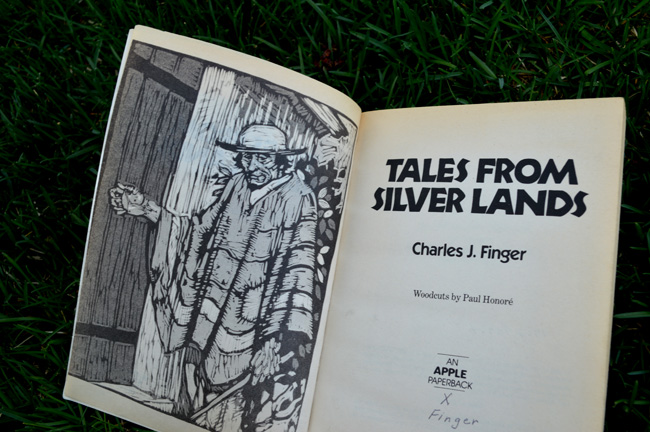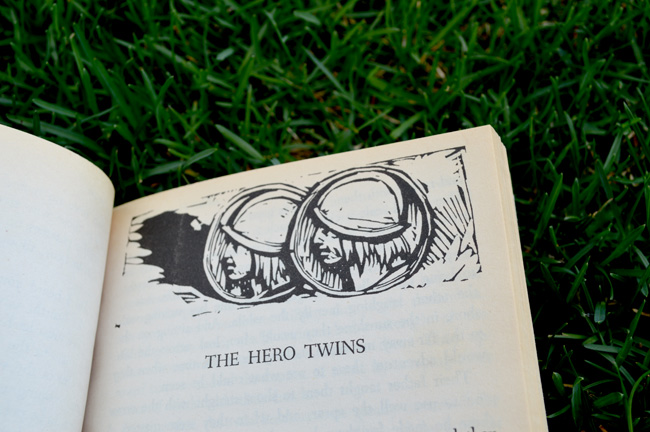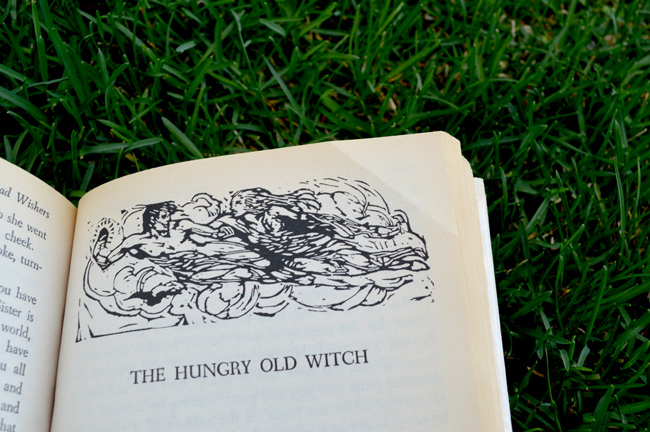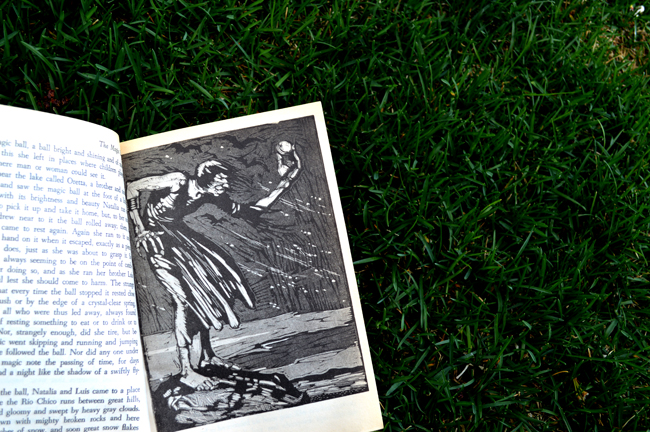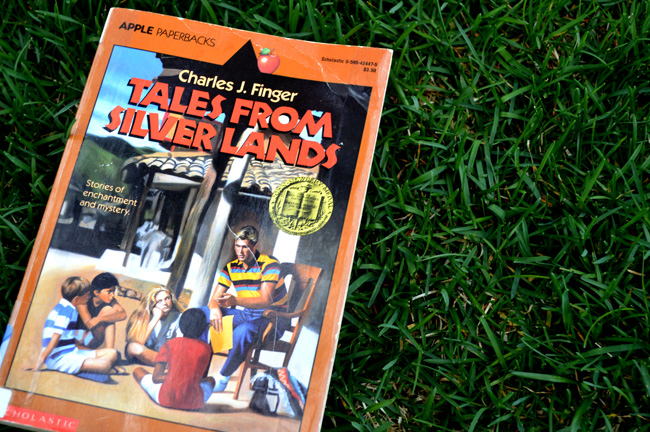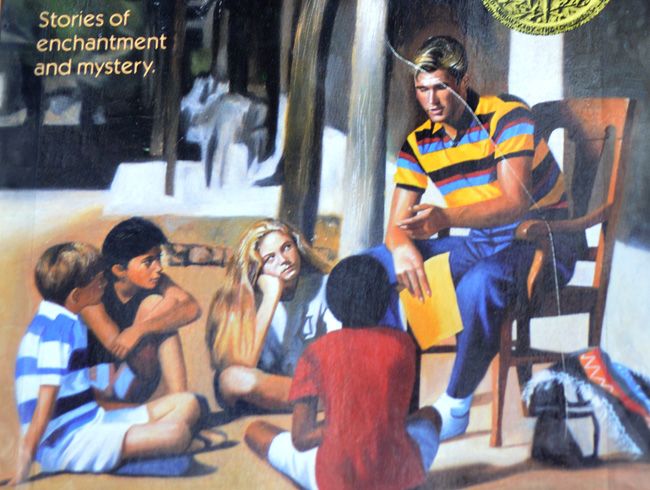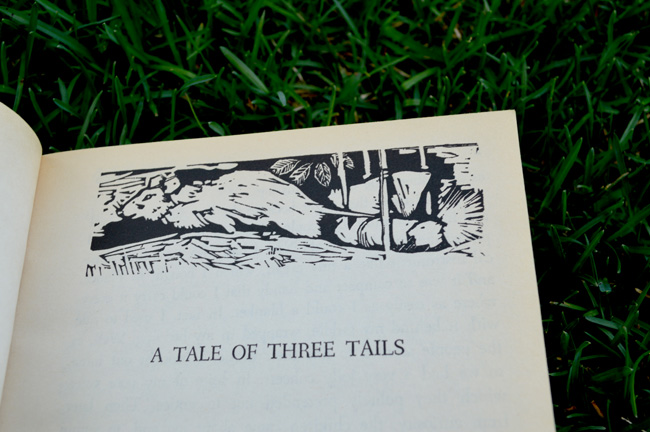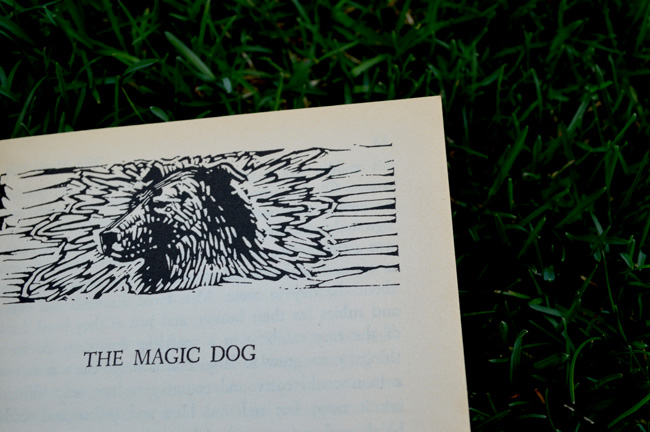Our fourth Newbery Award winner was another surprise: a collection of folktales. Tales from the Silver Lands by Charles J. Finger has 19 short folk tales from South America. Confession, it turns out that I don’t love reading a whole book of folktales, at least not more than two or three at a time. I don’t think it is really an injunction against Silver Lands; I think that if I had read it more slowly, say one story every three or four days, I would have enjoyed it more. The collection definitely had a unified feel to it such as themes of pure youths communing with nature and overcoming even witches and sorcerers, but I liked some of the stories more than others.
What I liked. My favorite tale was the one Finger, the author, said was his daughters’ favorite, entitled “The Tale That Cost a Dollar.” In it, a witch imprisons a girl, only allowing her out at night, and separately a boy, only allowing him out during the day. But one day when the boy is older, he stays out until the sky darkens and the sun disappears, and he is so startled he accidentally traps the witch in a tunnel he built. The girl sees this commotion and together they work to escape. The girl fears the sun and the boy the dark, but together they are strong and wise enough to escape. Loved it.
What was interesting. Finger as the narrator traveling around and listening to various tales was the most intriguing part of the book. Finger was a British immigrant who traveled around the Americas and Africa before settling in Arkansas and drawing on his travels and the sheep herding experiences of his youth. We don’t really get to know the narrator much; he only starts out a handful of the tales with first person accounts of who told (or sold) a tale to him. But I really wanted to know more about how he heard these stories, and whether these folktales have been recorded anywhere else, and how much he made the tales more like European folktales with his translation and word choices.
What were some limitations. Well, besides my usual squeamishness over a few creepy stories (and I know that some people love that aspect of fairy tales—really weird and creepy bad guys), I often wondered about the sources of these stories. How much are they Finger’s invention, or how old are they? You could see glimpses of the Columbian Exchange (animals and plants that came over post-1492 from the Old World) and a definite preference toward the unpopulated pure forest. So as a historian, I just wanted to know more about how these tales were collected, and who had done the retelling, and how they changed after the 1500s.
*Also, bonus limitation. This cover from the 1989 version, is so wonderfully strange. Why is Barbie’s Ken teaching a number of children who look bored as they sit in the dirt? Also the ink wood cuts are so cool and interesting, and I don’t know why this cover looks like it should be a part of the Babysitter’s Club.*
Why I think it’s a Newbery. A collection of folk and fairy tales is a pretty standard genre within children’s literature, and this particular collection is set in a far flung location (thus far seeming to be a 1920s Newbery preference—an exotic location.) And it has giants, witches, talking animals, sword fights, enchantments, evil step mothers, magic flying feathers, knots that can’t be untied, and creepy dream cat demons.
Similarity to other Newbery winners. It continues the wide geographic scope of the first three Newbery winners. It also continues to be a surprising genre: history book, travel adventure, old-fashioned pirate tale, and folktale collection. It’s hard to imagine what could come next! (Spoiler alert, another folktale collection…but in China!)
What it teaches me as a writer. I really longed to see some of these tales flushed out into novel or novella length. So in my own longer work I want to include similar great magical and symbolic objects and characters who have special abilities, but I want to give them more time to form a story. Also, I love the circular aspect of folktales: the setup, conflict, and resolution is so compacted that you really can see the repetition of details and the tie in to a particular theme more clearly than in longer novels. I think readers love to see the unique abilities of characters or setting details come back in the end to play a role in a satisfying ending.
What’s your take on Tales from the Silver Lands? Do you have a collection of folk or fairy tales you love to read?
